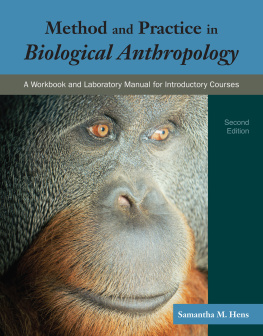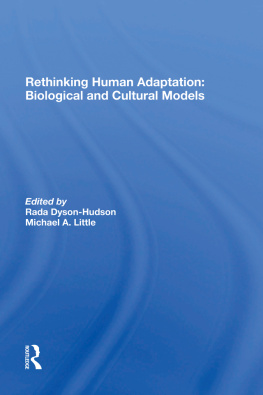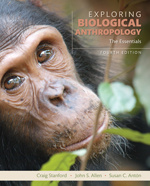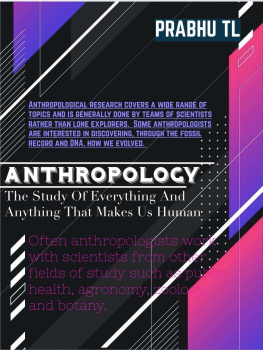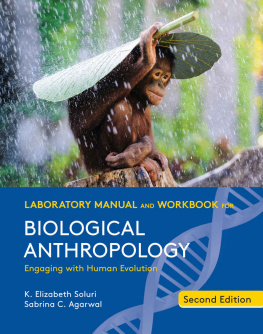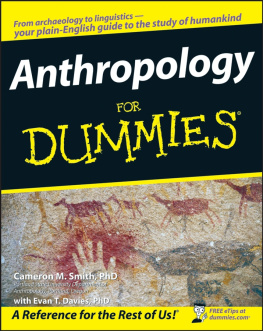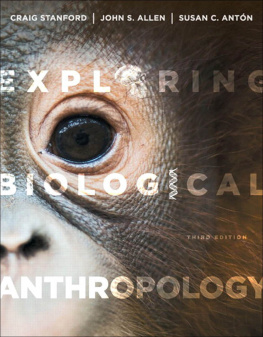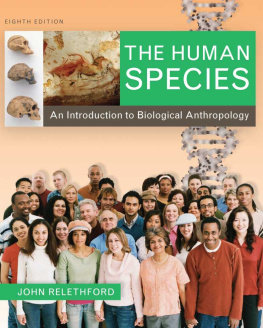
Method and Practice in Biological Anthropology
A Workbook and Laboratory Manual for Introductory Courses
Second Edition
Samantha M. Hens, Ph.D.
California State University, Sacramento

BostonColumbusIndianapolisNew YorkSan FranciscoUpper Saddle River
AmsterdamCape TownDubaiLondonMadridMilanMunichParisMontralToronto
DelhiMexico CitySo PauloSydneyHong KongSeoulSingaporeTaipeiTokyo
Editor in Chief: Ashley Dodge
Editorial Assistant: Stephanie Ruland
Marketing Coordinator: Jessica Warren
Managing Editor: Denise Forlow
Program Manager: Carly Czech
Inhouse Liaison: Emsal Hasan
Project Manager: Bonnie Boehme/Cenveo Publishing Services
Senior Operations Supervisor: Mary Fischer
Operations Specialist: Mary Ann Gloridane
Art Director: Maria Lange
Cover Designer: PreMedia Global, Inc.
Cover Image: Image Source/Corbis
Full-Service Project Management and Composition: Cenveo Publisher Services
Printer/Binder: RR Donnelley
Cover Printer: RR Donnelley
Text Font: New Century Schoolbook LT Std
Credits and acknowledgments borrowed from other sources and reproduced, with permission, in this textbook appear on appropriate page within the text.
Copyright 2015, 2008 by Pearson Education, Inc.
All rights reserved. Printed in the United States of America. This publication is protected by Copyright and permission should be obtained from the publisher prior to any prohibited reproduction, storage in a retrieval system, or transmission in any form or by any means, electronic, mechanical, photocopying, recording, or likewise. To obtain permission(s) to use material from this work, please submit a written request to Pearson Education, Inc., Permissions Department, One Lake Street, Upper Saddle River, New Jersey 07458 or you may fax your request to 201-236-3290.
Many of the designations by manufacturers and seller to distinguish their products are claimed as trademarks. Where those designations appear in this book, and the publisher was aware of a trademark claim, the designations have been printed in initial caps or all caps.
10987654321
ISBN 10: 0-13-382586-8
ISBN 13: 978-0-13-382586-2

Contents
Preface
Welcome! We are pleased to present the long-awaited second edition of Method & Practice in Biological Anthropology: A Workbook & Laboratory Manual for Introductory Courses. Since the publication of the first edition in 2006, many other introductory laboratory manuals have appeared on the market offering an array of pedagogical materials. However, choosing a laboratory manual remains difficult for many faculty because while some labs are well equipped with casts and models, others have only a paucity of materials to work with in the classroom. In these latter scenarios, many instructors struggle to provide meaningful lab-based exercises rather than simply repeating lecture materials. This second edition of our popular laboratory manual and workbook is designed to accommodate and function well within various classroom settings.
The 16 chapters in this edition are significantly revised and updated and cover the typical design of introductory courses: genetics, evolution and adaptation, the human skeleton, the nonhuman primates, and our fossil ancestors.
Each chapter has similar pedagogical elements, including:
A list of chapter objectives
Essential textual information that can stand alone, or support the formal lecture textbook of your choice
A set of reading questions to ensure student comprehension of basic concepts and definitions prior to engaging in laboratory activities
These reading questions can help to supplement lecture notes when lecture time is limited in the laboratory environment
I like to use these reading questions at the start of the class as a pop-quiz; the questions are one way to encourage students to read chapters prior to class and come prepared so that lecture may be minimized and hand-on activities may be maximized!
An array of laboratory exercises to choose from
A set of post-lab exercises designed to be answered by the student at home
The design of these chapters allows for assessment of student learning at multiple levels of Blooms Cognitive Taxonomy, for example, basic definitions/knowledge are learned through reading textual information and answering reading questions; the in-class exercises test a students comprehension through discussing, demonstrating, and problem solving; and the post-lab questions test the students recall of class information and ability to apply the concepts on their own.
Teaching an introductory laboratory course is a challenging assignment for any faculty member. It is my hope that this book will also help to make it a rewarding one.
Whats New in the Second Edition
With about 8 years between the first and second editions of this text, the changes and updates are numerous throughout and we hope you are pleased with the final product!
Throughout text:
The former Pre-Lab questions have been changed to Reading Questions and placed at the front of each chapter, clarifying their role in student learning.
We have color images! New technology in textbook design has made color images an affordable option for students.
In keeping with modern terminology, humans and our bipedal ancestors are now referred to as hominins, which better reflects genetic and evolutionary relationships, rather than the traditional hominids, which gave preference to human uniqueness over phylogeny.
Each and every chapter has new exercises, additional clarification and explanation of pivotal concepts, and/or expanded areas of coverage.
Over 75 new images and figures are found throughout the text.
An updated Glossary and Bibliography.
Specifically:
the explanation of the nature of science and empirical data has been expanded
contains several new Punnett Square examples, emphasizing human traits
underwent a major reorganization with a new title; blood typing is now covered before pedigree analysis
have been switched so that the axial skeleton is now presented prior to the appendicular skeleton; extensive skeletal features have been simplified for both chapters with all new images
is virtually all new with a new title and greatly expanded sex and age estimation sections and new sections on trauma analysis and pathology
contains all new sections on primate community and ecology
Next page
